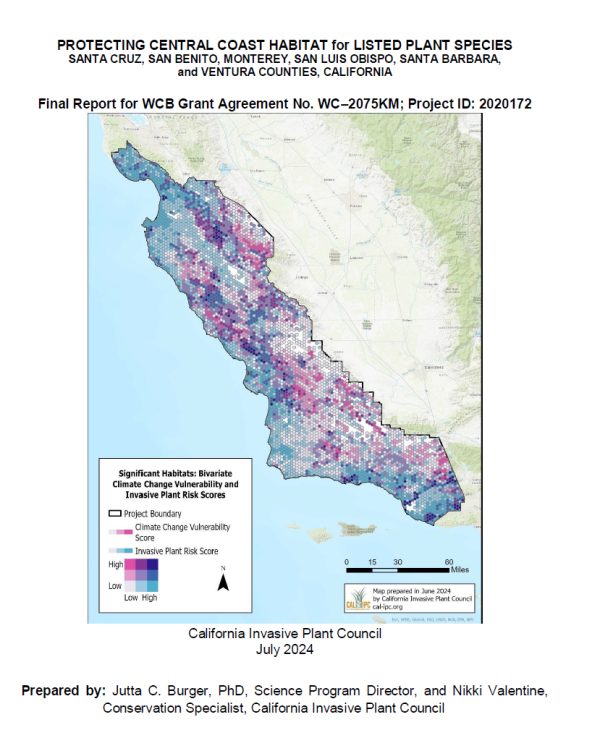 This project plans for climate-smart invasive plant management to improve climate resilience of federally listed species and sensitive habitats within the California Central Coast region encompassing Santa Cruz, Monterey, San Benito, San Luis Obispo, Santa Barbara, and Ventura counties. Specific attention is paid to how climate change vulnerability might compound the risks that invasive plants pose to species and habitats.
This project plans for climate-smart invasive plant management to improve climate resilience of federally listed species and sensitive habitats within the California Central Coast region encompassing Santa Cruz, Monterey, San Benito, San Luis Obispo, Santa Barbara, and Ventura counties. Specific attention is paid to how climate change vulnerability might compound the risks that invasive plants pose to species and habitats.
The information compiled and analyzed by this study provides a foundation for setting strategic priorities for land managers, helping land managers and agencies better identify which rare plant populations are most at risk from invasive plants, which rare plant species are most at risk regionally, and which habitats are most at risk today and into the future.
Download the Report
This report is available as a free download. Click here for the file with all documents for Protecting Central Coast Habitat for Listed Plant Species.
Contents:
Executive Summary
Fiscal Report
Grand Amendments
Task 1: Data Collection and Risk Assessment
Task 2: Compile Existing Invasive Plant Data for Other Important Habitats
Task 3: Prioritize Invasive Plant Management
Task 4: Plan Management Implementation
Conclusions
Literature Cited
Appendices
Please cite this report as: California Invasive Plant Council, Tom Robinson Consulting Inc., Creekside Restoration Inc., Santa Barbara Botanic Garden. 2024, and California Botanic Garden. Protecting Central Coast Habitat for Listed Plant Species: Santa Cruz, San Benito, Monterey, San Luis Obispo, Santa Barbara, and Ventura Counties, California. Cal-IPC Publication 2024-07. California Invasive Plant Council, Berkeley, CA. Available at www.cal-ipc.org.
For more information, contact Cal-IPC.
